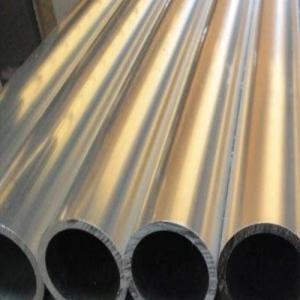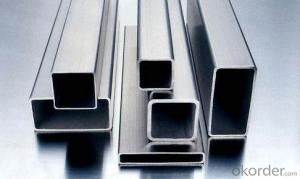Coated Aluminum Pipes Coil-AA1050
- Loading Port:
- China Main Port
- Payment Terms:
- TT OR LC
- Min Order Qty:
- -
- Supply Capability:
- -
OKorder Service Pledge
OKorder Financial Service
You Might Also Like
1.General Information of Color Coated Aluminium Coil with Competitive Prices
Aluminum coil is between 0.1 mm and 500mm in thickness and has a wide variety of uses in the construction industry including aluminium siding and roofing. Sheet is also used widely in construction, decoration, transport applications and other various industrial filed, such as automobile body panels, airframes, curtain walls and the hulls of boats etc.
Alloy | AA1050,AA1060, AA1070, AA1100, AA3003, AA3004, AA3005, AA3105, AA5005, AA5052, AA5754, AA5083, AA8011 |
Temper: | H12, H14, H16, H18, H22, H24, H26, H32,HO, F |
Thickness: | 0.10-4.0mm |
Width: | 10mm- 2000mm |
Coating | PE(Polyester) |
Painting Thickness | Standard 16-25 microns, max 40 microns |
Color | Acording to Ral colors or customer’s samples |
Standard: | GB/T17748-1999, ASTM, ISO, EU standard |
Special Specification is available on customer’s requirement | |
PE(polyester) Coating
PE(polyester) coating:high molecular polymer as monomer and addition of alkyd, is an UV-resistant coating. It can be classified matt and glossy according to coating gloss. The compact molecule structure, makes paint surface luster and smooth,which assure good printing on the panel surface. With an warranty of 8-10 years for weather resistance, it is specially applied for internal decoration and sign board.
2 Usage/Applications of PE Coated Aluminum Coil/Sheet
Our company's PE Coated Aluminum Coil/Sheet have been widely used in the fields of construction and decoration(garage doors, ceiling etc.), electronic appliances, lighting decoration, air-condition air pipe, sanwich panels and drainage, etc.
- Q: Maintenance personnel, Hisense inverter air conditioning with copper or aluminum tube?
- Some Hisense air-conditioning factory is indeed used for aluminum tubes, dedicatedI hope my answer is helpful to you. Welcome to accept it as encouragement. I wish you happiness!
- Q: Can aluminum pipes be welded?
- Yes, aluminum pipes can be welded.
- Q: Can 304 stainless steel aluminum pipe be welded with 6061?
- 304 stainless steel tube 6061 aluminum tubes, dissimilar metal welding.Method for welding friction welding, stainless steel tubes are respectively fixed on the friction welding of two fixed chuck open welder for rotation, two workpiece contact surface friction heat, through the pressurizing the two dissimilar metal contact oxidation layer is damaged, is to continue to operate a two joint welding effect metal.
- Q: Are aluminum pipes suitable for cryogenic applications?
- Aluminum pipes are not appropriate for cryogenic applications, as they become brittle and lose their mechanical properties at temperatures below -150°C (-238°F). Additionally, aluminum has a low melting point and inadequate thermal conductivity, rendering it unsuitable for use in extremely low temperatures. To guarantee the system's integrity and safety in cryogenic applications, materials such as stainless steel or other alloys with superior low-temperature characteristics are favored.
- Q: How do aluminum pipes compare to titanium pipes in terms of weight?
- In general, titanium pipes tend to be heavier than aluminum pipes. This is because titanium has a higher density than aluminum, resulting in titanium pipes weighing more than aluminum pipes of the same size. This quality makes aluminum pipes more suitable for industries like aerospace or automotive, where reducing weight is a top priority. Nevertheless, it is crucial to acknowledge that titanium pipes offer exceptional strength and durability, making them perfect for applications that demand resistance to corrosion, extreme temperatures, or heavy loads. Ultimately, deciding between aluminum and titanium pipes relies on the specific needs of the intended application.
- Q: Can aluminum pipes be used for wastewater disinfection systems?
- Indeed, wastewater disinfection systems can utilize aluminum pipes. Aluminum, a versatile and durable material, finds extensive application in various industries, including wastewater treatment. It boasts numerous advantages for disinfection systems, such as resistance to corrosion, lightweight composition, and ease of installation. Aluminum pipes exhibit remarkable resistance to corrosion, rendering them suitable for handling wastewater potentially containing harsh chemicals or corrosive substances. They can endure the corrosive impact of wastewater for prolonged periods without deterioration or demanding frequent maintenance. Furthermore, aluminum pipes are lightweight and easily manageable, making them highly convenient for installation in wastewater treatment plants. Their low weight not only reduces transportation costs but also simplifies the overall construction process. Moreover, aluminum pipes are compatible with different disinfection methods commonly employed in wastewater treatment, such as chlorination and UV disinfection. They efficiently direct disinfection agents or UV light throughout the system, ensuring effective disinfection of wastewater. However, it is essential to note that aluminum pipes may not be suitable for all wastewater disinfection systems. Certain specific disinfection methods, like ozonation, may not be compatible with aluminum due to potential reactions. In such scenarios, alternative materials like stainless steel might prove more appropriate. To summarize, aluminum pipes offer excellent corrosion resistance, lightweight composition, and ease of installation, making them a viable option for wastewater disinfection systems. Nevertheless, it is crucial to consider the specific disinfection method and its compatibility with aluminum before selecting it as the material for the system.
- Q: How do aluminum pipes compare to PVC pipes?
- Aluminum pipes boast durability and strength, showcasing resistance against rust and corrosion, rendering them fitting for outdoor and high-pressure purposes. Their lightweight nature allows for effortless transportation and installation, while their commendable thermal conductivity makes them an excellent choice for heating and cooling systems. It should be noted, however, that aluminum pipes may come at a higher price point compared to PVC pipes. Conversely, PVC pipes are celebrated for their cost-effectiveness and versatility. Their lightweight composition and ease of handling make them a favorite among DIY enthusiasts. With their resistance to chemical corrosion, PVC pipes are deemed suitable for plumbing and water supply systems. Moreover, their insulating properties make them an ideal option for electrical applications. Nonetheless, PVC pipes do not possess the same level of strength and durability as aluminum pipes, and they may become brittle over time. In essence, aluminum pipes excel in strength and durability, making them ideal for outdoor and high-pressure applications, albeit at a potentially higher cost. PVC pipes, on the other hand, shine in terms of affordability and adaptability, catering to plumbing and electrical needs, albeit lacking in strength and durability. The final decision between aluminum and PVC pipes hinges on the specific requirements of the project and the allocated budget.
- Q: Water heater tube welding seam how
- Two, low temperature 400 degrees aluminum welding method, with third generations of WE53 liquefied gas porous spray gun as heating source of heat, and then with WEWELDING Q303 welding wire spot welding, has good permeability.
- Q: Chigo Air Conditioning 2p hang up connecting tube, copper aluminum pipe free of charge, a few meters? How much is the extra pipe for a metre?
- Air conditioning original machine belt connection pipe is generally 3 meters long, plus tube last year is 80 yuan a meter, this year may rise to 90.
- Q: Who knows there is a high mountain reed 2plus short tube is what? Urgent!
- A short tube called first aid tent pole, or emergency fault rod, when you appear in the outdoor pole fracture, but also can not be repaired, you can use the emergency fault bar is set in place, so you can still set up the tent,
Send your message to us
Coated Aluminum Pipes Coil-AA1050
- Loading Port:
- China Main Port
- Payment Terms:
- TT OR LC
- Min Order Qty:
- -
- Supply Capability:
- -
OKorder Service Pledge
OKorder Financial Service
Similar products
Hot products
Hot Searches
























